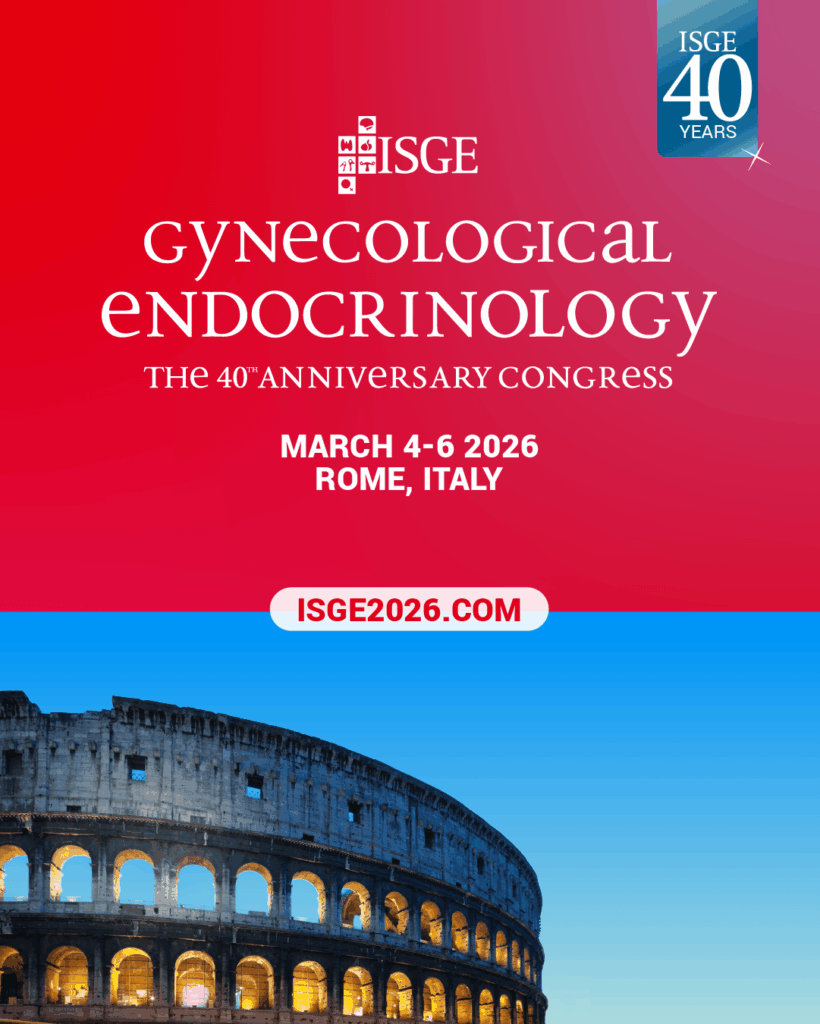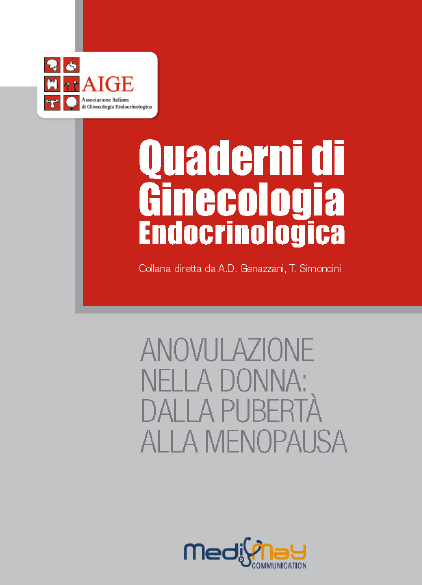-
Felice Petraglia, Alberto Imperatore, John R. G. Challis
Neuroendocrine Mechanisms in Pregnancy and Parturition
Endocr Rev 31: 783-816, 2010
Abstract
The complex mechanisms controlling human parturition involves mother, fetus, and placenta, and stress is a key element activating a series of physiological adaptive responses.
Preterm birth is a clinical syndrome that shares several characteristics with term birth. A major role for the neuroendocrine mechanisms has been proposed, and placenta/membranes are sources for neurohormones and peptides.
Oxytocin (OT) is the neurohormone whose major target is uterine contractility and placenta represents a novel source that contributes to the mechanisms of parturition. The CRH/urocortin (Ucn) family is another important neuroendocrine pathway involved in term and preterm birth. The CRH/Ucn family consists of four ligands: CRH, Ucn, Ucn2, and Ucn3. These peptides have a pleyotropic function and are expressed byhumanplacenta and fetal membranes. Uterine contractility, blood vessel tone, and immune function are influenced by CRH/Ucns during pregnancy and undergo major changes at parturition.
Among the others, neurohormones, relaxin, parathyroid hormone-related protein, opioids, neurosteroids, and monoamines are expressed and secreted from placental tissues at parturition.
Preterm birth is the consequence of a premature and sustained activation of endocrine and immune responses. A preterm birth evidence for a premature activation of OT secretion as well as increased maternal plasma CRH levels suggests a pathogenic role of these neurohormones. A decrease of maternal serum CRH-binding protein is a concurrent event. At midgestation, placental hypersecretion ofCRHor Ucn has been proposed as a predictive marker of subsequent preterm delivery. While placenta represents the major source for CRH, fetus abundantly secretes Ucn and adrenal dehydroepiandrosterone in women with preterm birth. The relevant role of neuroendocrine mechanisms in preterm birth is sustained by basic and clinic implications.
-
Renato Pasquali, Alessandra Gambineri, Carla Cavazza, Daniela Ibarra Gasparini, Walter Ciampaglia, Graciela Estela Cognigni, Uberto Pagotto
Heterogeneity in the responsiveness to long-term lifestyle intervention and predictability in obese women with polycystic ovary syndrome
European Journal of Endocrinology, 164:53-60, 2011
Abstract
Background: Treatment of obesity improves all features of the polycystic ovary syndrome (PCOS). There is, however, a heterogeneous response to weight loss, and predictive factors are unknown.
Objective: This follow-up study aimed to investigate obese women with PCOS treated with a long-term lifestyle program to evaluate responsiveness and predictability.
Methods: One hundred PCOS women meeting the criteria for selection were invited to participate and 65 of them agreed. Lifestyle intervention had consisted of a 1200–1400 kcal/day diet for 6 months, followed by mild calorie restriction and physical activity. The protocol, which was similar at baseline and follow-up, included anthropometry, clinical evaluation, pelvic ultrasound, and laboratory investigations. The mean follow-up period was 20.4±12.5 months.
Results: After the follow-up period, women were reclassified into three groups according to the persistence (group 1, 15.4%), partial (group 2, 47.7%), or complete (group 3, 36.9%) disappearance of the categorical features of PCOS (hyperandrogenism, menses, and ovulatory dysfunctions). Duration of the follow-up and extent of weight loss were similar among the three groups, as were fasting and glucose-stimulated insulin and indices of insulin resistance. Baseline waist circumference, waist to hip ratio (WHR), and androstenedione blood levels were negatively correlated with a better outcome in the univariate analysis. However, only basal androstenedione values persisted to a highly significant extent (P<0.001) in the multivariate analysis.
Conclusions: Responsiveness to weight loss in overweight/obese PCOS women varies considerably and more than one third of women may achieve full recovery. These findings add new perspectives to the impact of obesity on the pathophysiology of PCOS.
-
Natsuko Tokushige, Robert Markham, Ben Crossett, Seong B. Ahn, Vidya L. Nelaturi, Alamgir Khan, Ian S. Fraser
Discovery of a novel biomarker in the urine in women with endometriosis
Fertil Steril 2011;95: 46–9
Abstract
Objective: To investigate whether proteins secreted in urine differ between women with and without endometriosis.
Design: Laboratory study using human urine.
Setting: University-based laboratory.
Patient(s): Women with and without endometriosis undergoing laparoscopy, hysteroscopy and curettage.
Intervention(s): Urine collection from women with and without endometriosis.
Main Outcome Measure(s): Proteomic techniques and mass spectrometry to identify proteins secreted in the urine
of women with and without endometriosis.
Result(s): On average, 133 proteins were significantly different between women with and without endometriosis.
Cytokeratin-19 was highly up-regulated in the urine of women with endometriosis.
Conclusion(s): Cytokeratin-19 may be a valuable urinary biomarker for endometriosis.
-
James D. M. Nicopoullos, Hossam Abdalla
Poor response cycles: when should we cancel? Comparison of outcome between egg collection, intrauterine insemination conversion, and follow-up cycles after abandonment
Fertil Steril 2011;95:68–71
Abstract
Objective: To determine optimal management with one or two mature follicles after stimulation.
Design: Retrospective analysis.
Setting: Lister fertility clinic.
Patient(s): A total of 1,350 IVF/intracytoplasmic sperm injection cycles (7.3% of total) during 1998–2009 were found to have one or two mature follicles.
Intervention(s): Group 1 (n = 807) comprised those who proceeded to vaginal egg collection (VEC) (59.8%; outcome per egg collection), group 2 (n = 248) those who converted to IUI (18.4%; outcome per insemination) and group 3 (n = 259) those who abandoned the current cycle (21.9%; outcome per abandoned cycle in first subsequent cycle).
Main Outcome Measure(s): Live birth rate, clinical pregnancy rate, and biochemical pregnancy rate.
Result(s): Biochemical pregnancy rates of 13.1%, 4.9%, and 9.7%, clinical pregnancy rates of 8.1%, 3.6%, and 7.2%, and ongoing pregnancy rates of 6.8%, 2.0%, and 5.5% were achieved in groups 1, 2, and 3, respectively. All pregnancy outcomes were significantly higher after VEC (group 1) than for those converted to IUI (group 2), and all pregnancy outcomes were higher with borderline significance in group 3 vs. group 2. There was no significant difference in outcome between groups 1 and 3.
Conclusion(s): Our data suggest that for such poor responders, proceeding to VEC may represent their best chance of successful outcome. Conversion to IUI offers the poorest outcome, and despite the potential for improvements in cycle protocol, abandoning and a further attempt does not improve outcome (using abandoned cycle as the denominator).
-
Brian W. Whitcomb, Renee Turzanski-Fortner, Kevin S. Richter, Simon Kipersztok, Robert J. Stillman, Michael J. Levy, Eric D. Levens
Contribution of male age to outcomes in assisted reproductive technologies
Fertil Steril 2011;95:147–51
Abstract
Objective:To evaluate the relationship between male age and pregnancy outcome in donor oocyte assisted reproductive
technology cycles.
Design: Retrospective cohort.
Setting: Private IVF center.
Patient(s): A total of 1,392 donor cycles from 1,083 female recipients and their male partners.
Intervention(s): Oocyte donor cycles.
Main Outcome Measure(s): Live birth.
Result(s): Increasing male age was associated with semen parameters including volume and motility; however,
male age was not observed to have a statistically significant association with likelihood of live birth in donor cycles
after adjustment for female recipient age.
Conclusion(s): When treatment cycle number and female recipient age were taken into account, male age had no
significant association with pregnancy outcomes in assisted reproductive technology donor cycles in this study
population.
-
TAREK GELBAYA, SRISAILESH VITTHALA, LUCIANO NARDO, MORAD SEIF
Optimizing hormone therapy for future reproductive performance in women with premature ovarian failure
Gynecological Endocrinology, 2011; 27(1): 1–7
Abstract
With increasing success in treatment of childhood cancer there is a growing population of women with premature ovarian failure (POF) seeking fertility treatment. Various preparations of estrogen and progestogen are prescribed for young women with POF. While the dose and duration of hormone therapy (HT) is usually adjusted according to the patient’s height and the
Tanner’s stage of development for young pre-pubertal women, the optimal effective HT regimen to maximise the reproductive potential for young as well as for the older age group remains unclear. Furthermore, there is a paucity of evidence to support the preferential effectiveness of the different regimens used. Assisted reproduction using donated gametes or embryos remains the only realistic option to enable women with POF to conceive. Successful outcomes are primarily dependant on successful implantation and placentation. Consequently, the success of assisted reproduction is determined by uterine and endometrial development, which is largely influenced by the modality of HT as well as the age at which it is commenced. In this review, we critically appraise the current practices and published data for management
of women with POF. We aim to focus on the effect of HT on uterine development in women with primary and irreversible POF.
-
Ilana J. Halperin, Shoba Sujana Kumar, Donna F. Stroup, Sheila E. Laredo
The association between the combined oral contraceptive pill and insulin resistance, dysglycemia and dyslipidemia in women with polycystic ovary syndrome: a systematic review and meta-analysis of observational studies
Hum. Reprod. 201, 26(1): 191-201
Abstract
BACKGROUND Polycystic ovary syndrome (PCOS) is the most common endocrine disorder of young women. First-line treatment is often the oral contraceptive pill (OC), but evidence suggests that OC may worsen metabolic outcomes in this population. We undertook this meta-analysis of observational studies and cohorts from within randomized controlled studies to investigate the association between OC use and dysglycemia, dyslipidemia and insulin resistance (IR) in women with PCOS.
METHODS We searched MEDLINE (1966–April 2010), EMBASE (1980–April 2010) and All EBM Reviews. We included prospective cohorts and RCTs that treated women, aged 13–44, with PCOS with OC for at least 3 months. Blinded quality assessment and data extraction were conducted on 35 included studies by two independent reviewers. We used random effects methods to calculate weighted mean differences as the effect size. We investigated heterogeneity using sequential removal of studies, subgroup analysis and meta-regression.
RESULTS OC use was significantly associated with an increase in high-density lipoprotein cholesterol (HDL-C) (P = 0.004) and triglycerides (P = 0.004). Significant heterogeneity was found in glucose, cholesterol, HDL-C, low-density lipoprotein cholesterol triglycerides, fasting glucose to insulin ratios and homeostatic model assessments-IR. Study characteristics such as mean BMI, mean age and duration of study could explain some of the heterogeneity.
CONCLUSIONS Use of OC was not associated with clinically significant adverse metabolic consequences. Because of limitations of the underlying studies, further research including rigorously designed randomized trials would more definitively confirm our findings.
-
Barbara Luke, Morton B. Brown, Judy E. Stern, Stacey A. Missmer, Victor Y. Fujimoto, Richard Leach
Female obesity adversely affects assisted reproductive technology (ART) pregnancy and live birth rates
Hum. Reprod. 2011, 26(1): 245-252
Abstract
BACKGROUND Obesity has risen among women in the USA, including those seeking infertility treatments. In 2007, height and weight were added to the Society for Assisted Reproductive Technology Clinic Online Reporting System (SART CORS), permitting calculation of BMI (weight/height2) for the first time using this national dataset.
METHODS The SART CORS was used to evaluate the odds of failure to achieve a clinical intrauterine pregnancy and failure to achieve a live birth by the woman’s age, BMI and oocyte source (autologous versus donor), controlling for race and ethnicity, day of embryo transfer, number of embryos transferred and infertility diagnoses. The reference population was women with normal BMI.
RESULTS There were 45 163 ART embryo transfers where maternal height and weight were recorded. Increasing obesity was associated with a significant rise in failure to achieve a clinical pregnancy with the use of autologous oocytes (P< 0.0001), but no difference with the use of donor oocytes. Among women using autologous oocytes who did conceive, failure to achieve a live birth increased with increasing obesity, to a greater extent among women <35 years of age.
CONCLUSIONS Higher BMI is associated with an increased failure to achieve a clinical intrauterine gestation; this risk was overcome with the use of donor oocytes. Failure to achieve a live birth increases with higher BMI, significantly with the use of autologous oocytes (P< 0.0001), and to a greater extent among women <35 years of age (P< 0.0001).
-
Irene Lambrinoudaki
Cardiovascular risk in postmenopausal women with the polycystic ovary Syndrome
Maturitas 68: 13–16, 2011
Abstract
Polycystic ovary syndrome (PCOS) is one of the commonest endocrine disorders, affecting 5–10% of the female population of reproductive age. “Classic” PCOS is characterized by clinical or biochemical hyperandrogenism and oligo-ovulation. According to the 2003 Rotterdam criteria, two additional phenotypes are recognized: (1) the ovulatory patient with androgen excess and polycystic ovarian morphology and (2) the anovulatory patient with polycystic ovarian morphology without androgen excess. PCOS is associated with an adverse cardiometabolic profile, consisting of increased total or central adiposity, increased blood pressure, a pro-atherogenic lipid profile, increased inflammatory markers, insulin resistance and abnormal glucose metabolism. Furthermore, the incidence of overt or gestational diabetes mellitus, as well as of preeclampsia is significantly higher in PCOS patients. Among the various PCOS phenotypes, those with evidence of androgen excess have the highest burden of cardiovascular risk. Studies evaluating the incidence of cardiovascular disease in postmenopausal women with PCOS are extremely sparse.
The available data so far indicate that coronary heart disease, as well as cerebrovascular disease is more common in postmenopausal PCOS patients. Persisting high androgen levels through the menopause, obesity and maturity onset diabetes mellitus are proposed as the main mechanisms accounting for the increased risk.
-
Guy Leclercq, Patricia de Cremoux, Pascale This, Yves Jacquot
Lack of sufficient information on the specificity and selectivity of commercial phytoestrogens preparations for therapeutic purposes
Maturitas 68 (2011) 56–64
Abstract
Phytoestrogens (PEs) are polyphenols of plant origin among which flavones, flavanones, isoflavones, coumarins, chalcones, lignans and stilbenes are the best representatives. By interacting with specific residues of the estradiol-binding pocket of estrogen receptors (ERs), they induce estrogenic responses, supporting the concept that they could be of benefits against the menopausal disorders due to endogenous estradiol depletion. According to literature data, PEs target a panel of proteins, suggesting that their effects are not limited to ER-dependent transcription pathways. In this regard, commercial preparations usually contain a mixture of compounds of which nature and concentration are not specified. Such mixtures being freely accessible and escaping thereby medical survey, they could exert unwanted effects, depending on their qualitative and quantitative composition as well as the physiopathological status of the women. This work outlines the necessity to inform consumers of the exact nature of these PEs preparations. Moreover, women who want to take PEs should inform their practitioner to be under strict medical survey. In the case of hormone-dependent cancer antecedents or predispositions, use of PEs is extremely inadvisable.
-
Karin Schenck-Gustafsson, Mark Brincat, Tamer Erel, Marco Gambacciani, Irene Lambrinoudaki, Mette H. Moen, Florence Tremollieres, Svetlana Vujovic Serge Rozenberg, Margaret Rees
EMAS position statement: Managing the menopause in the context of coronary heart disease
Maturitas 68: 94–97, 2011
Abstract
Introduction: Cardiovascular disease (CVD) including coronary heart disease (CHD) and stroke is the mostcommon cause of female death. Premenopausal CHD is very rare but when women enter the menopause the incidence of CHD increases markedly. CHD presents 10 years later in women than in men. The reason is still unclear but the protective effects of estrogens have been suggested.
Aims: To formulate a position statement on the management of menopause women in the context of coronary heart disease.
Materials and methods: Literature review and consensus of expert opinion.
Results and conclusions: Based on long term randomized placebo-controlled studies hormone therapy (HT) is not recommended for the primary or secondary prevention of CHD in postmenopausal women. In most countries the only indication for HT is the treatment of menopausal symptoms. Women with known CHD or with many coronary risk factors seeking HT because of troublesome climacteric symptoms should be evaluated for their individual baseline risk of developing breast cancer, venous thromboembolism and CHD recurrence. The same applies to non hormone therapy-based treatments where long term clinical studies are lacking. Risks should be weighed against expected benefit from symptom relief and improved quality of life. The lowest effective estrogen dose should be used during the shortest possible
time. Transdermal administration is preferred if risk factors for VTE exist. Different progestogens might differ in their cardiovascular effects. Observational studies suggest that micronized progesterone or dydrogesterone may have a better risk profile than other progestogens with regard to thrombotic risk.
-
Rogério Bonassi Machado, Luciano de Melo Pompei, Arícia Galvão Giribela, Cassiana Galvão Giribela
Drospirenone/ethinylestradiol: a review on efficacy and noncontraceptive benefits
Women’s Health 7: 19–30, 2011
Abstract
Considerable advances have been made in the field of combined oral contraceptives since their introduction 50 years ago. This ongoing evolution has been focused on reducing the estrogen dose and synthesizing new progestogens. A recently launched combination of ethinylestradiol 20 μg and drospirenone 3 mg demonstrates the advantages of a lower estrogen dose with the antimineralocorticoid activity of drospirenone that is responsible for the drug’s significant antiandrogenic and antimineralocorticoid effects, reflected clinically in lower rates of adverse events including less fluid retention. In addition to the drug’s contraceptive efficacy, its effects on the skin and other classic noncontraceptive benefits, the ethinylestradiol 20 μg and drospirenone 3 mg combination has demonstrated highly satisfactory results in women with premenstrual dysphoric syndrome.
-
Victor W Henderson
Gonadal hormones and cognitive aging: a midlife perspective
Women’s Health 7: 81–93, 2011
Abstract
Gonadal steroids affect a variety of brain processes. Cognitive consequences of hormonal changes associated with menopause are of scientific interest and of relevance to public health. Natural menopause is a normal physiological process that can only be directly studied through observational research. Similarly, surgical menopause in humans is rarely directly amenable to experimental research. Causality with respect to cognitive outcomes is, therefore, difficult to infer. Cross-sectional and longitudinal findings from the Melbourne Women’s Midlife Health Project, the Study of Women’s Health Across the Nation and other midlife cohorts suggest that cognitive consequences of the natural menopausal transition are probably small, at least during midlife and at least for episodic memory, which is a key cognitive domain. The data for episodic memory are the most robust. Midlife episodic memory performance is similar both shortly before and after natural menopause, and serum estradiol concentration in midlife is not associated with episodic memory performance. Effects of natural menopause on other cognitive domains, cognitive consequences of surgical menopause and late-life cognitive consequences of midlife hormonal exposures are less well understood and merit continued study
-
Nicola Pluchino, Fiorella Bucci, Vito Cela, Alessandra Cubeddu, Andrea Riccardo Genazzani
Menopause and mental well-being: timing of symptoms and timing of hormone treatment
Women’s Health 7: 71–80, 2011
Abstract
In the aftermath of the Women’s Health Initiative studies, both the clinical and basic science communities had to sort out divergent results among experimental findings, observational data
and randomized controlled trials in order to establish a shared analysis. The scientific community formally debates the role of different HRT formulations, hormone doses, time of treatment initiation since the menopause and the age of treated women. Basic scientists demonstrated that the multiple neuroprotective effects of estrogen on brain cells may induce a differential biological response according to the time of treatment. Progesterone (but not all synthetic progestins) also has pivotal neuroactive functions in animal models of reproductive aging. Additionally, epidemiological surveys provide information regarding the detrimental role of hypogonadism on mental well-being. The present article briefly summarizes current evidence supporting the neuroactive role of estrogen, with reference to the clinical finding sustaining the intriguing hypothesis of the early female brain senescence as a highly responsive period to estrogen treatment
-
Santiago Palacios
Hypoactive Sexual Desire Disorder and current pharmacotherapeutic options in women
Women’s Health 7: 95–107, 2011
Abstract
Hypoactive Sexual Desire Disorder (HSDD) is the most common female sexual dysfunction. The diagnosis of HSDD requires the existence of personal distress or interpersonal difficulties associated with low sexual desire, that cannot be explained by any other psychiatric affection and that is not exclusively due to a disease or substance. HSDD can have a serious effect on emotional wellbeing and interpersonal relationships, and it occurs in premenopausal and postmenopausal women. The Decreased Sexual Desire Screener is a shortened diagnostic method designed to help doctors who are not specialized in female sexual dysfunction to diagnose acquired HSDD in women. There is evidence that treatment with androgens or with estrogens is effective in HSDD; however, important unanswered questions still exist. Presently, new therapeutic strategies to combat HSDD are being researched, including novel methods of testosterone provision and drugs that act upon the CNS.






